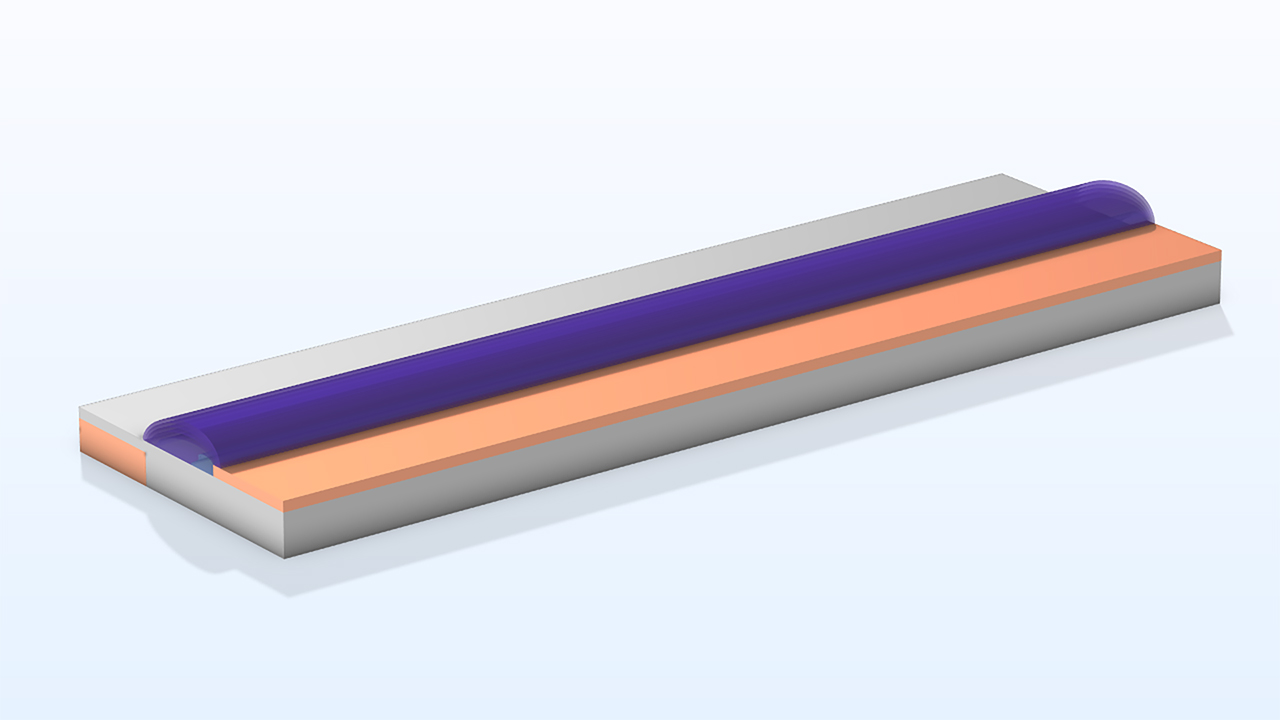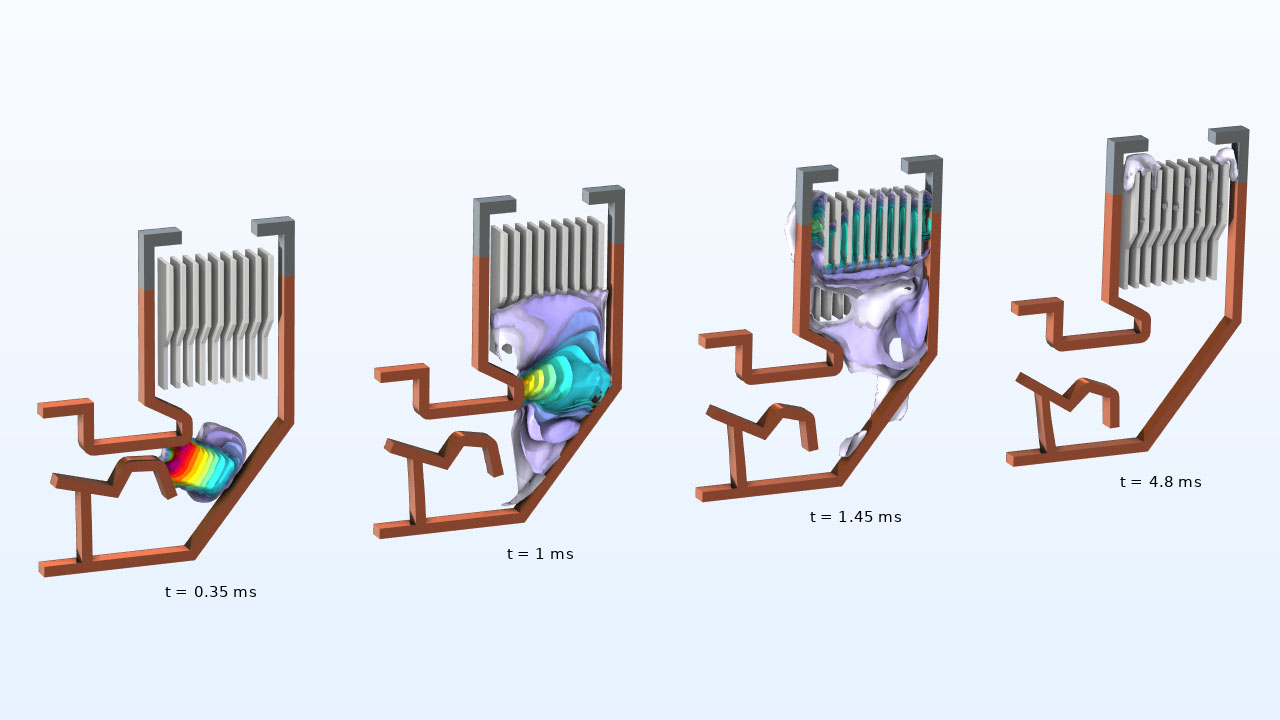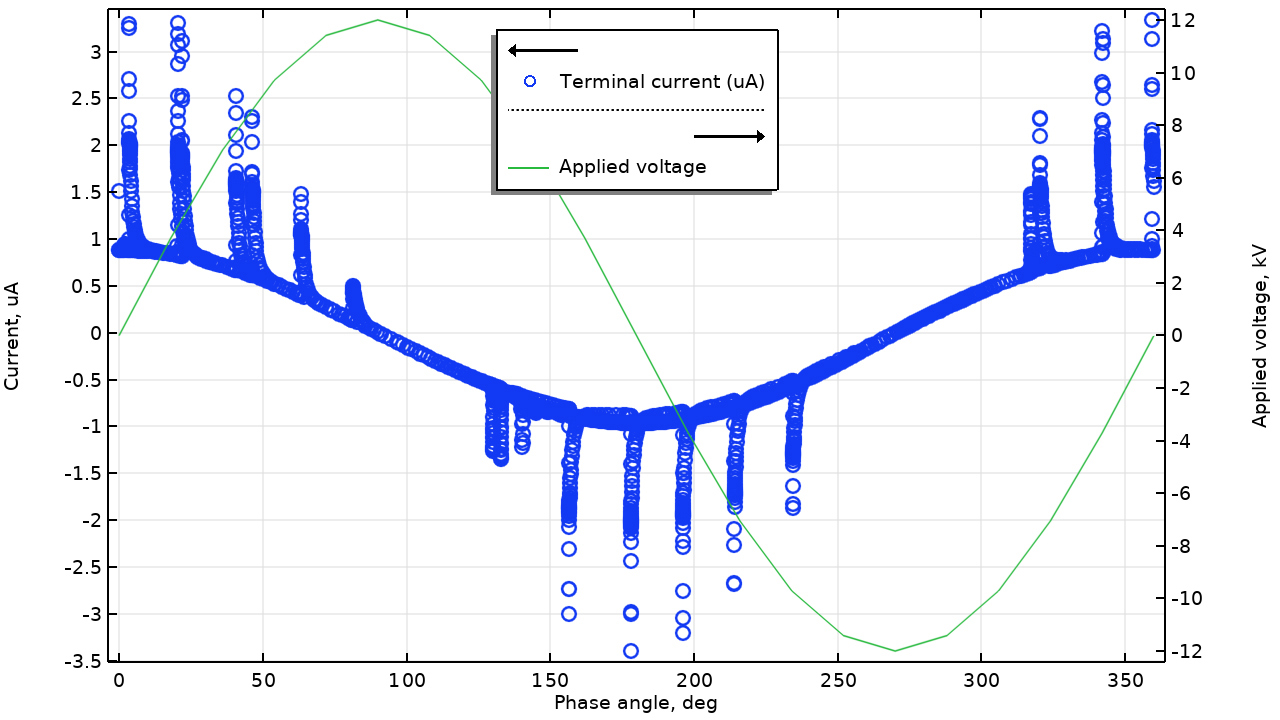Electric Discharge Module Updates
For users of the Electric Discharge Module, COMSOL Multiphysics® version 6.4 provides faster switching arc simulations, improved stability and more efficient computations, and the capability to model floating electrodes and their charge transport interactions. Learn more about these updates below.
More Efficient Switching Arc Simulation
Several enhancements have been made to the Arc Discharge multiphysics interface, including improvements to the moving mesh and remeshing solver for curl elements, as well as optimized material data and model formulations for better convergence. A fully coupled 3D switching arc model — integrating magnetohydrodynamics, moving mesh, and external circuit effects — can now be solved within just a few hours on a standard PC. These improvements can be seen in the Switching Arc Discharges in Low-Voltage Circuit Breakers tutorial model.
Temperature (left) and electric current density (right) distribution during the switching arc extinction dynamics in a low-voltage circuit breaker.
More Robust Electric Discharge Simulation
Improvements to the numerical formulation, initial values, and boundary conditions of the Electric Discharge interface significantly improve stability and computational efficiency. For time-dependent studies, a new Include time steps effect on stabilization time scale option is available for streamline-diffusion stabilization. Additionally, the initial values and boundary conditions have been refined to offer better initialization for solvers. Explore these enhancements in the Partial Discharge Inside Solid Dielectrics and Surface Dielectric Barrier Discharge tutorial models.
Floating Electrode Feature
The new Floating Electrode feature provides specialized capabilities for modeling floating electrodes and their interactions with charge transport. The electrode's floating potential is automatically calculated by considering the discharge current flowing into the electrode. A typical application of this feature is the modeling of suspended metal particles, which are a well-known factor in the degradation of high-voltage insulation systems, as they distort the local electric field and promote premature discharge activity. The Streamers Initiated from Suspended Metal Particles tutorial model demonstrates this new feature.

Multiphysics Modeling of Novel Semiconductor Architectures
For modeling novel semiconductor architectures — where specialized charge transport models coupled with several other physics phenomena are often required — the Transport of Charge Carriers interface in the Semiconductor Module enables seamless integration of customized charge carrier transport models with thermal and electromagnetic simulations. Explore this multiphysics modeling workflow in the Memristor tutorial model.

Symmetry for Terminals
The Terminal feature now supports an area multiplication factor (available in the Advanced Settings section after enabling Advanced Physics Options). This accounts for symmetry by scaling the terminal area so connected circuits or loads will perceive the full device even when only part is modeled. For example, a factor of 2 should be used if the model represents half the device. The update is available for the Electrostatics interface, the Electric Currents interface, and the Magnetic and Electric Fields interface.

New Tutorial Models
COMSOL Multiphysics® version 6.4 brings several new tutorial models to the Electric Discharge Module.








